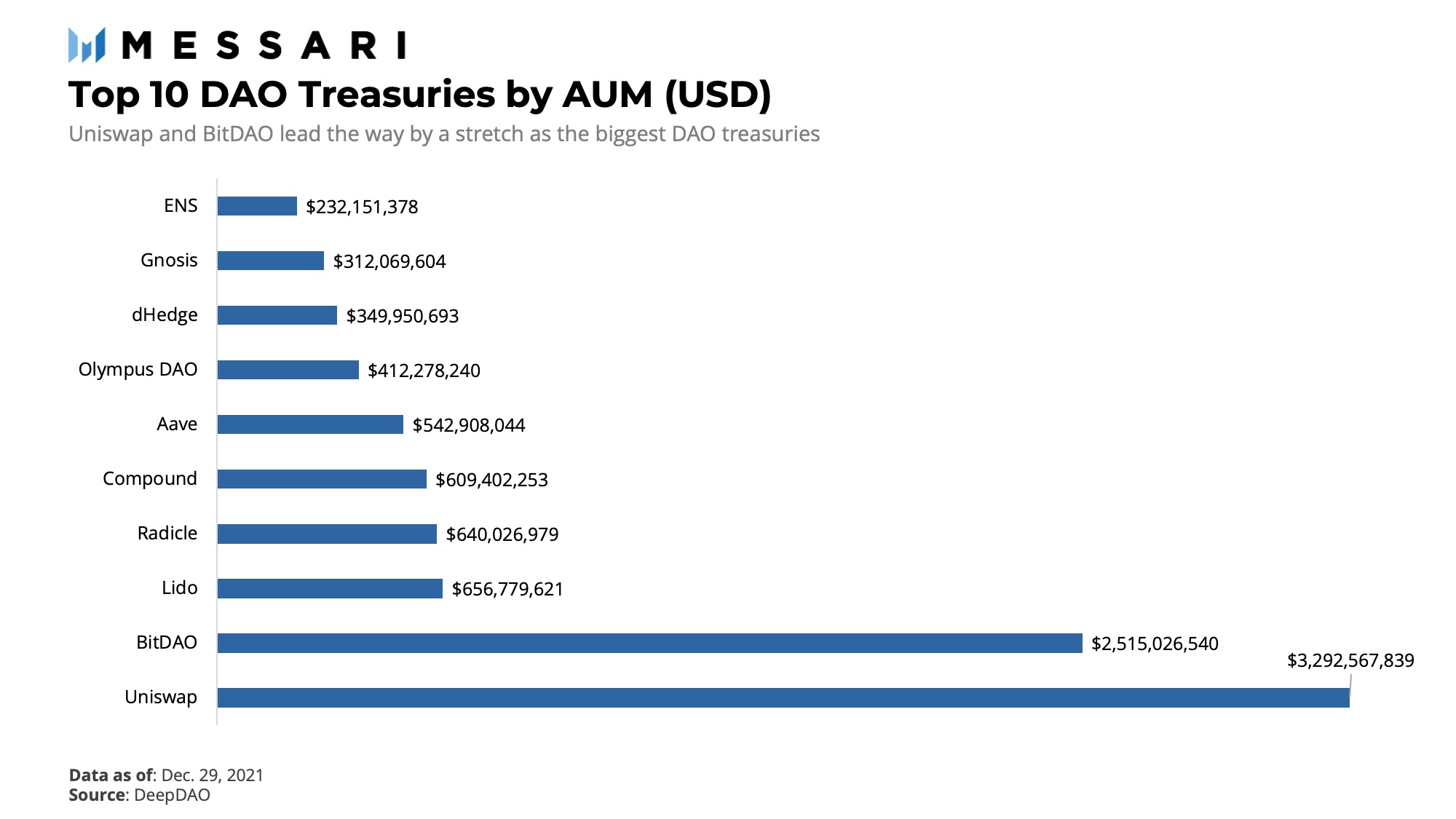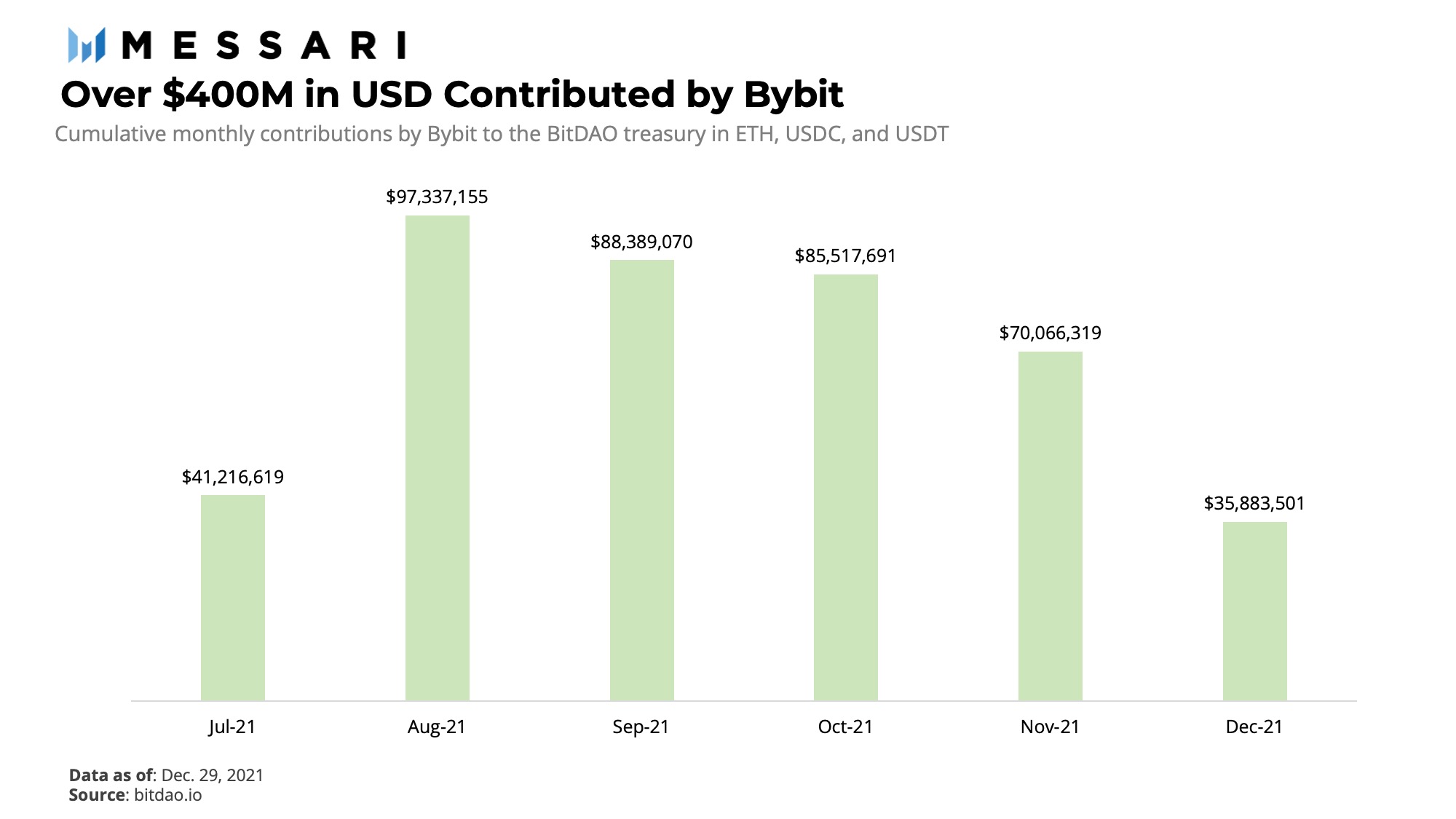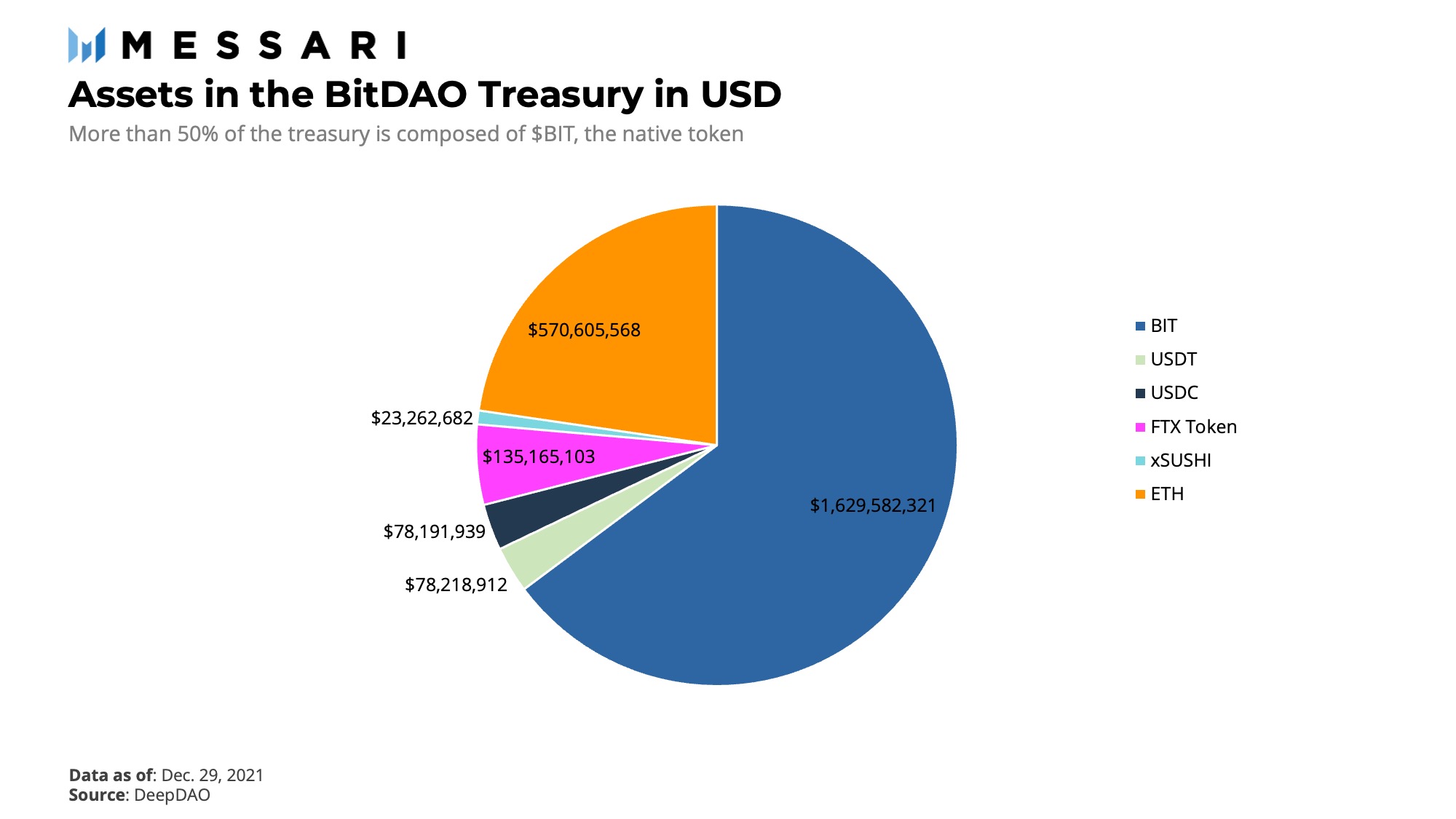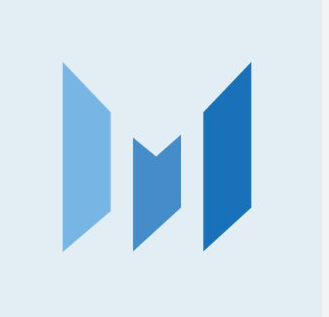Messari interprets BitDAO: one of the largest DAOs by treasury size
Author: Eshita Nandini
Original Title: 《BitDAO: Rethinking the Investment DAO》
Compiled by: Hu Tao, Chain Catcher
In addition to traditional venture capital and funds, investment DAOs have become an important vehicle for funding the web3 ecosystem. As more capital enters the space, projects are beginning to look for the best ways to deploy funds beyond their own growth to increase revenue streams.
We have seen this in grant programs, but Bybit has taken an interesting approach by forming a DAO aimed at funding various projects within the blockchain ecosystem: gaming, DAOs, DeFi, etc. Rather than building like a decentralized venture fund, BitDAO aims to fund and maintain the entire blockchain ecosystem with substantial capital. While the current focus is on Ethereum, BitDAO is chain-agnostic.
The LAO is an investment DAO that has existed for several years, where members must be accredited to participate in deploying grants or funds in exchange for tokenized equity or utility tokens. In contrast, BitDAO is not composed of investors but rather contributors and teams who will decide how to allocate funds to proposed projects or established teams. BitDAO has quickly become a massive DAO while gathering significant partners and projects along the way; let's take a look at its structure, processes, and potential.
Bybit Initiation
BitDAO was launched on August 3, 2021, and while it is new, it is one of the largest DAOs by treasury size, managing approximately $2.5 billion in assets. BitDAO's grand vision is to support the development of open finance and help foster a decentralized, tokenized economy. The DAO was founded by Bybit, a top derivatives exchange based in Singapore that launched in 2018 with the aim of competing with BitMEX. Bybit is currently not available for use in the U.S. or Canada like other contract protocols.

The BitDAO treasury is currently second only to Uniswap, primarily composed of contributions from Bybit, which will provide 2.5 basis points of all futures trading volume to the BitDAO treasury, amounting to approximately $1 billion annually. This contribution is expected to slow down, as the initial commitment was to kickstart the DAO and its operations. Thanks to this support, BitDAO was able to immediately attract token holders (around 14,000), contributors, and partners within its active months.

Although BitDAO was initiated by Bybit, it was not established to manage the Bybit protocol. Due to its commitments, they have been issuing ETH, USDC, and USDT to the treasury, donating approximately $400 million since July.
BIT Token
Shortly after the announcement of BitDAO, the BIT governance token was launched through a Dutch auction on MISO, which is a launchpad for new projects on SushiSwap. A fixed supply of 10 billion BIT tokens was introduced: 60% reserved for Bybit (45% on a vesting schedule), 30% for the BitDAO treasury, 5% for launch partners, and 5% allocated through private sales. The DAO of SushiSwap was the first to collaborate with BitDAO, providing technical support for governance and funding operations, in return for which they received 2.6% of the circulating supply.

Currently, most of the funds are composed of BIT and ETH— the goal is to gradually diversify through token trading. Bybit is by far the largest token holder; they have indeed claimed to have granted some voting power to Windranger Labs, Pentagon Labs, some venture partners, and individual contributors. Holding such a large stake in BitDAO, it is clear that the Bybit team sees the DAO model as a way to invest in and sustain blockchain projects, but Bybit itself remains a centralized entity with no public decentralization plans.
Community and Governance
BitDAO currently uses Gnosis Safe and Snapshot for governance, with an open authorization and proposal process. Windranger Labs is one of the core contributor teams, aiming to build leading DeFi protocols and L1/L2 while leveraging the BitDAO treasury. Additionally, they are collaborating with Mirana Ventures, which is a venture partner of Bybit and BitDAO, to support proposals.
As it is a relatively new DAO, new members do not have a formal onboarding process. Joining Discord and following recent proposals on the Discourse forum is the best first step, and as BitDAO improves and defines its processes, there should be clearer indicators of how contributors can become immediately useful.
Investment Directions
As it is in its early stages, BitDAO has already passed two significant proposals for phased funding deployment from the treasury. These proposals are aimed at creating autonomous entities for ecosystem funds, arts, R&D, venture capital, events, grants, education, and more. These entities will be funded and supported by the DAO but will expand based on their decision-making and operations to maintain bandwidth for BitDAO core contributors.
1) Game7
BitDAO has partnered with Forte to launch a $500 million accelerator to support the adoption and development of the blockchain gaming industry. In short, Game7 hopes to attract developers and builders to create crypto-native games.
2) eduDAO
This $33 million initiative will fund the university ecosystem by supporting teachers, research, projects, and events. They have launched an education DAO in collaboration with organizations from schools like UC Berkeley, Harvard, and MIT.
The FTT token swap is the third proposal for the treasury, exchanging $100 million BIT for 3 million FTT through Alameda Research. This transaction aims to solidify the partnership between Alameda Research and BitDAO, as both seek to commit to supporting projects in the tokenized economy.
The Future of BitDAO and DAOs
BitDAO has laid out bold plans to incubate and develop projects through its finances and community. Although the DAO is still young, it has secured funding for the foreseeable future, allowing them to make significant bets on the entire ecosystem rather than a single one-off crypto project. With the partners and talent it can attract, BitDAO has ample resources to effectively test the DAO model and, in turn, provide lessons for the field on what truly works when dealing with large projects that involve multiple distributed teams.










